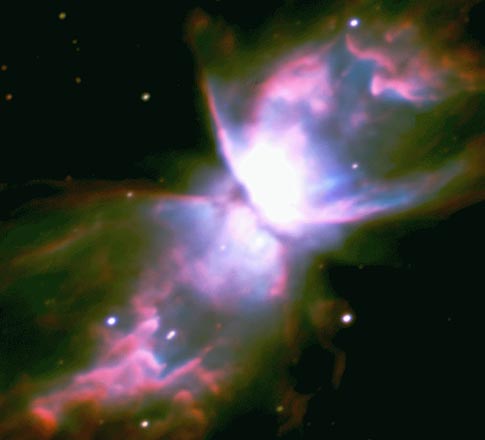
|
Credit & Copyright: Very Large Telescope,
ESO
Explanation:
The Butterfly Nebula
is only thousands of years old.
As a central star of a
binary system aged,
it threw off its outer envelopes of gas in a strong stellar wind. The remaining stellar core
is so hot it ionizes the previously ejected gas,
causing it to glow.
The different colors of this
planetary nebula are determined by small
differences in its composition.
This
bipolar nebula
will continue to shine brightly for only a
few thousand more years, after which its central star
will fade and become a
white dwarf star. The above picture is one of the
first ever taken by the Very Large Telescope (VLT),
a new 8.2-meter telescope located in
Chile.
|
January February March April May June July August September October November December |
| ||||||||||||||||||||||||||||||||||||||||||||||||
NASA Web Site Statements, Warnings, and Disclaimers
NASA Official: Jay Norris. Specific rights apply.
A service of: LHEA at NASA / GSFC
& Michigan Tech. U.
Based on Astronomy Picture
Of the Day
Publications with keywords: bipolar - planetary nebula - butterfly nebula
Publications with words: bipolar - planetary nebula - butterfly nebula
See also:
- The Bipolar Jets of KX Andromedae
- APOD: 2025 August 31 B NGC 7027: The Pillow Planetary Nebula
- APOD: 2025 August 22 B A Tale of Two Nebulae
- APOD: 2025 August 5 B NGC 6072: A Complex Planetary Nebula from Webb
- APOD: 2025 July 29 B A Helix Nebula Deep Field
- APOD: 2025 July 13 B Planetary Nebula Mz3: The Ant Nebula
- APOD: 2025 June 9 B Between Scylla and Charybdis: A Double Cosmic Discovery
